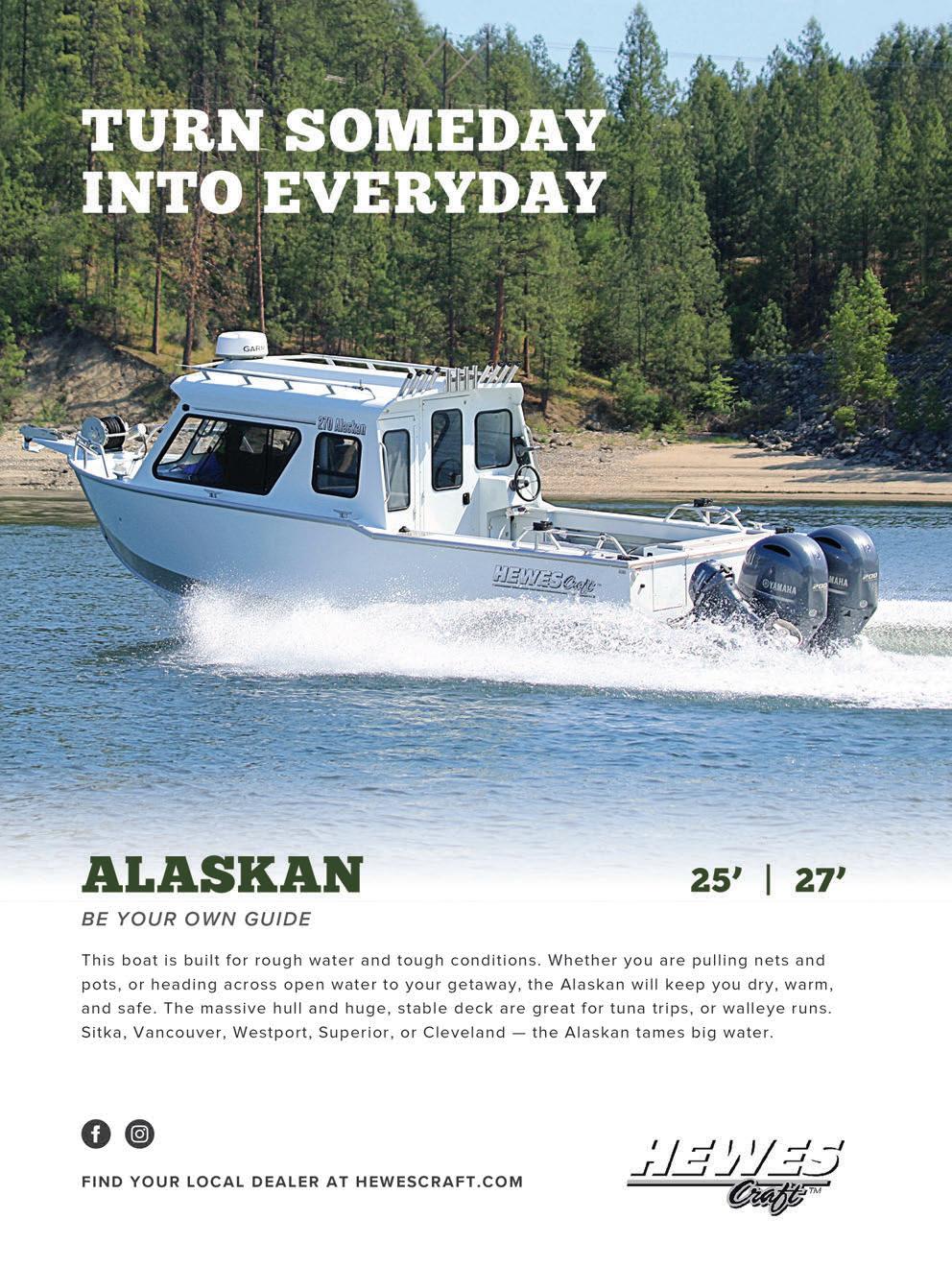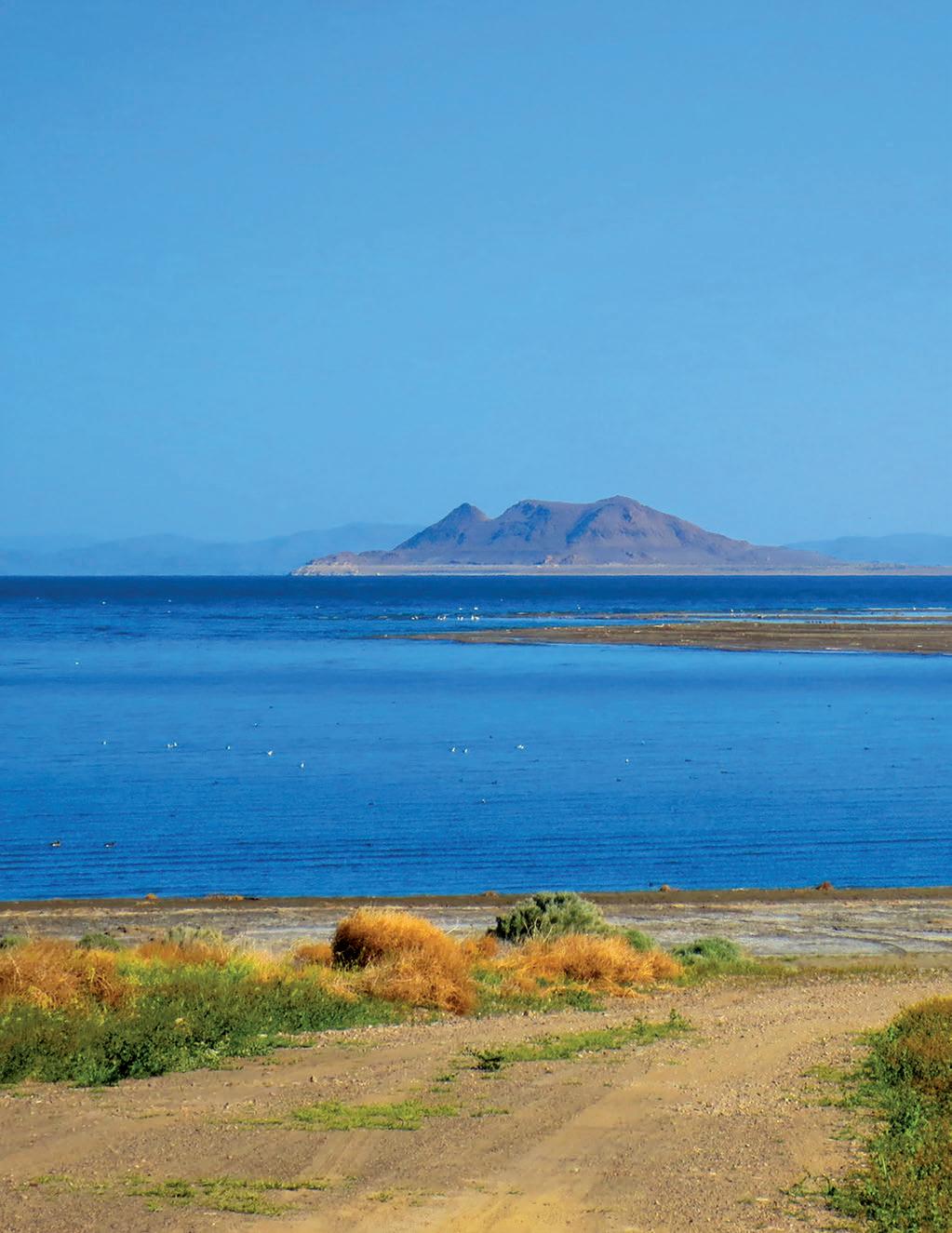
19 minute read
has affected us all Book excerpt: John Gierach
CROSBY’S AND CUTTHROATS NEVADA’S PYRAMID LAKE TROUT AMONG ADVENTURES IN NEW FISHING BOOK
Editor’s note: Celebrated fishing author John Gierach’s latest book takes readers on a journey to legendary waters throughout the American West and beyond. Gierach, a Coloradoan, has published countless books about his experiences as a fly angler, and his latest work took him to massive Pyramid Lake in Nevada – just northeast of Reno – in search of the lake’s iconic Lahontan cutthroat trout. The following is an excerpt from Dumb Luck and the Kindness of Strangers, published by Simon and Schuster and available for purchase from Amazon, Barnes and Noble and other outlets. The book is set to publish in early June.
By John Gierach
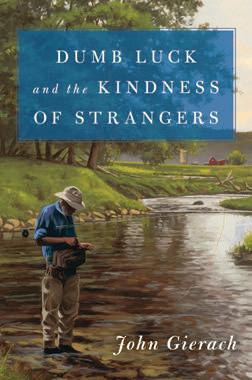
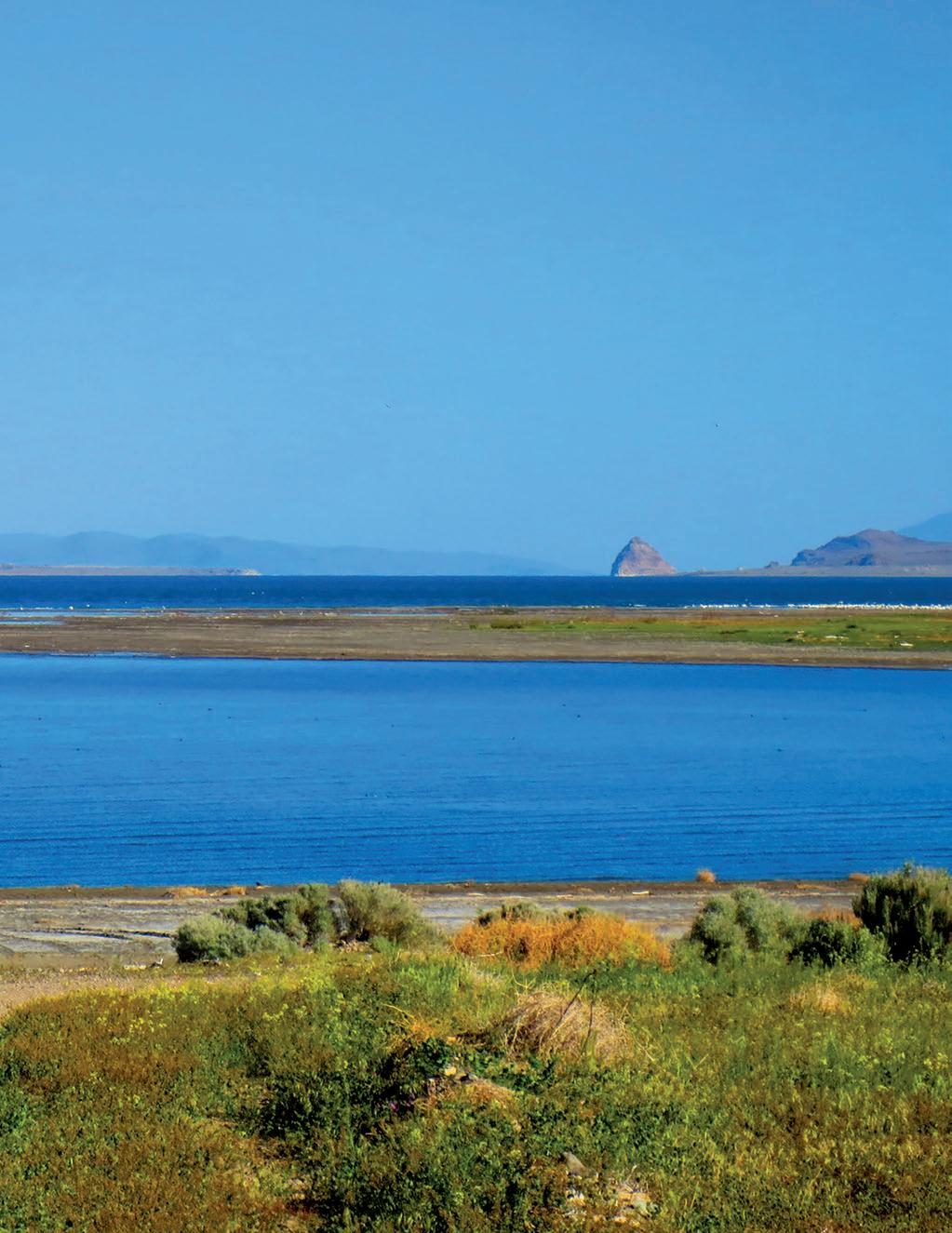
We’re at an establishment called Crosby’s getting deep-fried burritos for breakfast. It’s early morning and the place is full of fishermen. Many exhibit the easy familiarity of locals, greeting everyone by name, while others are just as evidently tourists, including some who seem to have settled for gas station coffee when they really wanted a half-caff caramel macchiato.
I’m a tourist myself, but maybe less obvious than some. For one thing, I’ve always been one of those guys who could put on a coat and tie and still be mistaken for the janitor. For another, I’m with Rob Hagerty, the kind of boisterous local guide who knows everyone and whose company bestows some credibility.
Gierach has had more than 20 books and anthologies published since 1977, including in recent years Still Life With Brook Trout (2005), No Shortage of Good Days (2011) and All Fishermen Are Liars (2014). (JOHN GIERACH)

Crosby’s constitutes the entire business district of the reservation town of Sutcliffe, Nevada, population 253. Short of driving to Reno, this is where you go to buy gas, groceries, fishing licenses, tackle, beer, coffee, and food, and it’s conveniently attached to the kind of country/western bar where the impact tremors from the jukebox register in the gravy on your chicken fried steak. You can also play a slot machine here, take a shower, do a load of laundry, store your boat or RV behind a chain link fence, and rent either a small cabin or a trailer with a hookup. (“That’s a ‘hookup,’ not a ‘hooker,’” they’ll say with a straight face.)
I was staying on the beach out at Pyramid Lake in a borrowed fifth wheel with a working heater and lights and gallon jugs of water for brewing coffee and judiciously flushing the toilet – usually in that order. The view out my front door was stunning in the monotone way of a desert landscape in late winter and the heater came in handy, since in March the days can be chilly and the nights downright cold. This thing was parked at a place called Windless Bay, where the wind howled every night, rocking the trailer on its springs like a big cradle.
A FEW MONTHS EARLIER Rob had invited me to Nevada to fish for Lahontan cutthroats, which would be a new one for me. I’d caught seven of the 14 surviving subspecies of cutthroat trout and was intrigued by the idea of adding another one to my life list, but that’s not to say this was part of a quest to bag them all. I don’t have the patience or the emotional stamina for quests, and anyway that had been done before by at least two writers I know of who’d published well-written books about their exploits. In Cutthroat: A Journey Through the American West, Michael Graybrook talked about the high elevation sucking the air from his lungs “like a straw at the bottom of an empty glass” and hail falling on his tent “like gravel poured from the sky.” In Many Rivers to Cross, M.R. Montgomery simply said, “Any time the trout are hard to catch, you are not in the real West.”
The cutthroats in Pyramid Lake now are the original strain once removed. The native fish were lost early in the 20th century for the usual thoughtless reasons: overfishing – both sport and commercial – plus dewatering and dams on the Truckee River that prevented spawning. In retrospect, it’s as if people were trying to wipe out the fish, although I’m sure they were as surprised as anyone when it
Corral Creek

8 miles north of Kernville on the Kern River 8 miles north of Kernville on the Kern River 760-376-3601 760-376-3601 RIENDLY P ET FRIENDLY Kitchenettes Kitchenettes BBQDeck BBQDeck www.corralcreeklodge.comwww.corralcreeklodge.com Call direct to reserve pet rooms Call direct to reserve pet rooms
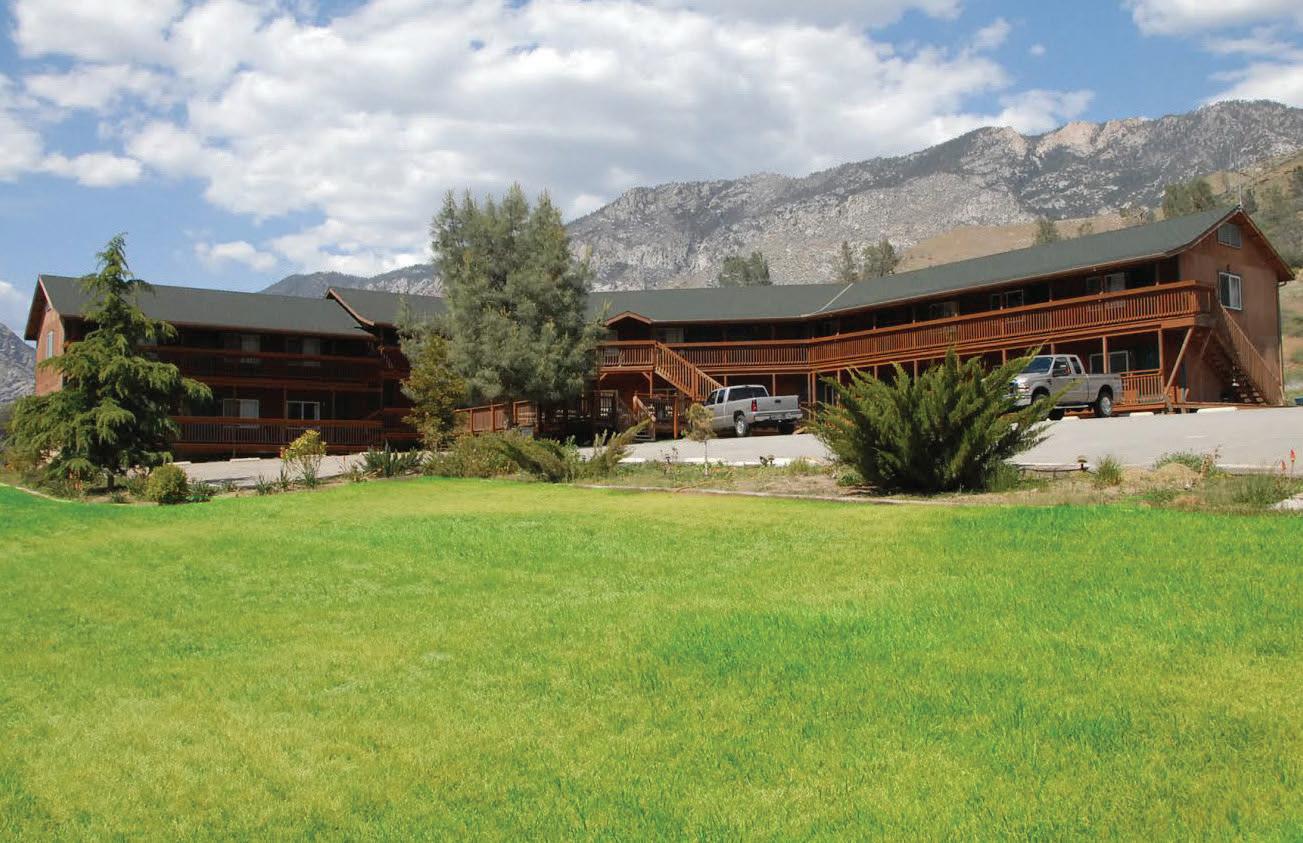

An angler walks down to the shore of Lake Pyramid at the Anaho Island National Wildlife Refuge with a stepladder, how fishermen have adapted to casting for cruising cutts. “The first time I climbed up on one of these things the whole operation felt a little too vertiginous for my taste, but I quickly got used to it and eventually began to feel mildly regal,” writes Gierach. (CINDY SANDOVAL/USFWS)
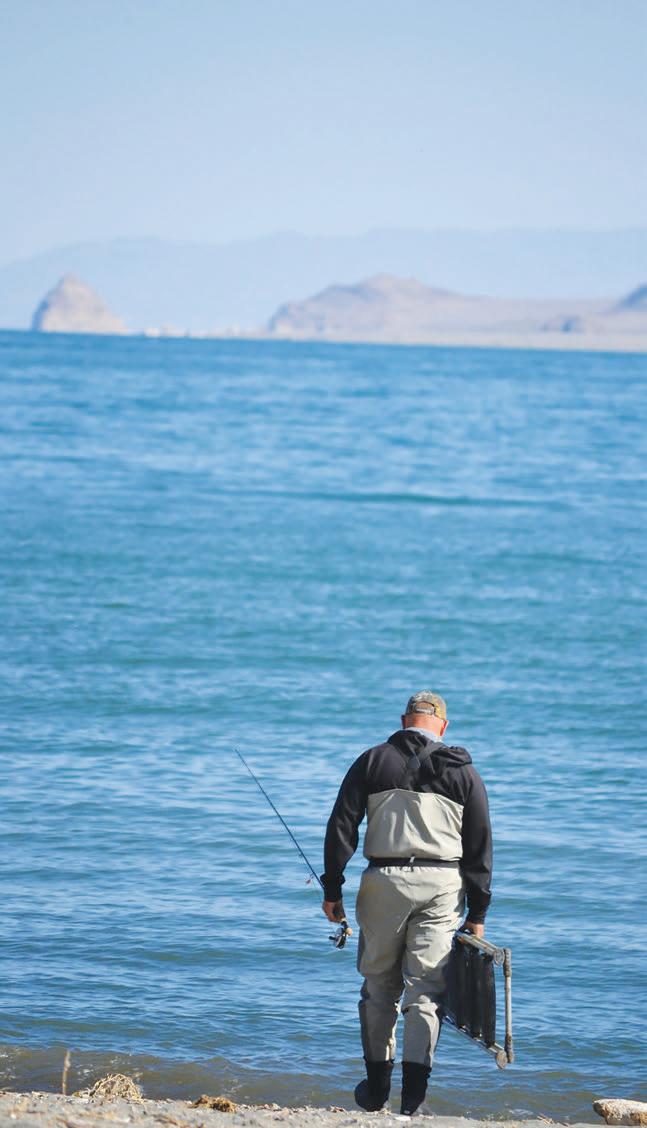
actually happened.
But although Pyramid Lake is still a large body of water at 125,000 acres, it’s just a remnant of Lahontan Lake, an inland sea that was once bigger than Lake Ontario. When those prehistoric waters receded at the end of the Pleistocene they stranded isolated populations of Lahontan cutthroats around the region that were later collected, raised in hatcheries, and replanted in Pyramid Lake. Those fish – known as the Pilot Peak strain – had been segregated for so long that their genetics may have no longer been a precise match to the original Pyramid Lake fish, but they were the best available version and are good enough for all but the pickiest connoisseurs.
In an imperfect world where two subspecies of cutthroat have already gone extinct and others may soon follow, they constitute an environmental victory.
THE LAKE WAS CROWDED in the third week of March. Six weeks earlier flash flooding had washed out roads and bridges, and the Paiute Tribe had closed the lake in the middle of fishing season. Pyramid Lake sits in the Nevada desert and it’s in a bowl formed by four mountain ranges that concentrate the heat like a Dutch oven, so there’s no fishing during the hot months when shallow-water temperatures reach or exceed the trout’s upper avoidance level and the fish retreat to the depths where they’d be out of range of anything short of downriggers anyway.
I’d given up on the trip when Rob called to say that a small part of the lake had reopened – about 30 percent of what you can normally fish – so I booked a flight and hurried out. I didn’t foresee that everyone else who’d been champing at the bit would do the same and that we’d all be squeezed together into a relatively short stretch of shoreline. It wasn’t the first time eagerness has clouded my judgment.
A crowd of fishermen looks different here than it does in most other places because of the local custom of fishing from atop ladders. The inherent problem is that the fish will often cruise the dropoff shelf that, depending on the water level, can be a long reach for a wading fisherman with limited back-cast room.

While Pyramid’s original cutts are extinct due to habitat and overfishing pressures, the lake has been restocked with Lahontans that were released decades ago into waters near Pilot Peak on the Nevada-Utah border. (REBECCA FABBRI/USFWS)
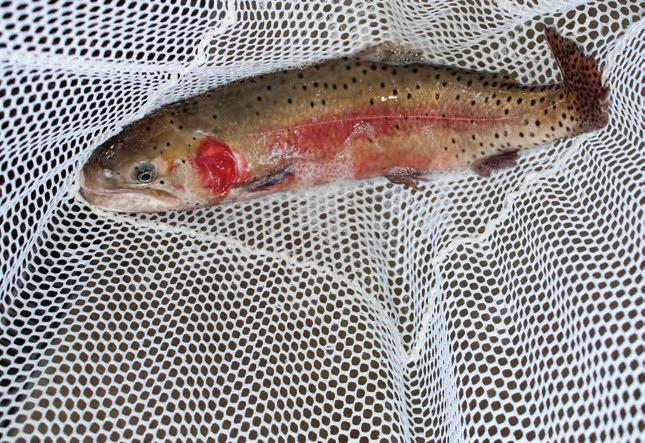
The original solution was to wade out as deep as possible, sink a milk crate, and then step up on it to cast. It was better than nothing and did keep your back cast up a little, but there wasn’t much room to stand; it only gave you an extra 11 inches, and the crates would sometimes settle so deeply into the soft bottom that they couldn’t be retrieved.
But it wasn’t long before some anonymous local genius realized the obvious and began fishing from a stepladder. This was close to perfect: climbing to the next-to-last rung of a 6-foot ladder would nearly double your elevation and you could lean into the step above like the casting brace in a drift boat. Now, of course, there are actual fishing ladders: Utility stepladders that are tricked out with a handle and wheels for dragging, rod and net holders, a fold-out casting platform, and a boat seat. Some fishermen cast from the sitting position, others stand, and still others cast from their feet and then take a seat to watch the dead drift of their Thingamabobbers.
The first time I climbed up on one of these things the whole operation felt a little too vertiginous for my taste, but I quickly got used to it and eventually began to feel mildly regal, like a 19th-century English sahib hunting tigers from the back of an elephant.
WE STARTED AT PELICAN Point, where Rob’s trailer was parked along with several other fifth wheels and dozens of pickups and SUVs. This was the most popular beach currently open and the long line of ladders stretching along the bank gave it the feel of a large construction site. We found a gap in the line, planted a ladder in waist-deep water, and I climbed aboard and started casting with the usual rig: A brace of large beadhead midge pupae suspended 4 or 5 feet below an orange bobber on an 8-pound tippet.
I’m told that on days when the fish are more active the drop-off is sometimes marked by the backs of rolling trout and when the light is better you can see the color change in the water that marks the shelf. But the fish weren’t very active – for reasons we’d wonder about over the next week – and the day was cloudy and chilly with the kind of flat, gray light that left an unreadable sheen on the surface.
Still, the drop-off was clearly delineated by a line of orange and chartreuse bobbers stretching 200 yards north and south – with a gap for the boat ramp – so it was easy enough to measure my cast, take a seat, and wait.
I’m not a fan of what I think of as combat fishing, but this wasn’t combative. For one thing, instead of being pointedly ignored, as often happens in crowds, I got neighborly nods and waves from the fishermen closest to me as I mounted up. And in the course of things I learned that a flubbed cast or a missed strike might draw some good-natured hooting, while landing a fish would elicit a congratulatory whoop or a 1960s-style clenched fist salute – all from people who, like me, would much rather have had this beach to themselves. There’s an unstated but specific etiquette here that keeps things civilized. Cast only to your own personal space – an elongated, pie-shaped wedge of water right in front of you – and don’t squeeze your ladder in too close to your nearest neighbors. If you leave for any length of time, you’re expected to take your ladder with you to make room for someone else, but it’s permissible to leave it as a place holder during short errands the way you’d leave your jacket on the back of your chair for a trip to a restaurant bathroom. It’s not complicated and a local guide later told me the whole thing is governed by the single, all-encompassing rule: “no assholes allowed.”
A few hours later I’d landed my first two Lahontan cutthroats – one a fat 18-incher – blown a strike while daydreaming, and come to terms with what I’d first considered a mob scene. I hadn’t changed my mind about fishing in a crowd, but I’d decided that if I have to do it, this is the kind of crowd I want.
The draw here for most isn’t so much the rare subspecies of cutthroats as their occasional size. Most of the fish caught are on the high end of normal – a keeper is between 17 and 20 inches long or over 24 inches – but every now and then enormous fish weighing 20 pounds or more are landed. This doesn’t happen every day and when it does it’s likely to make the local newspaper, but it’s what the lake is known for.
The first thing you notice when you walk into Crosby’s are all the mounts of large fish – including a replica of the official world-record Lahontan, a 41-pounder caught in 1925 – and the south wall is
Reliable Quality Service & Craftsmanship For Over 50 Years! Custom Boat Trailers



• NMMA Certifi ed • All Steel Weld Frame, Fenders & Bunks • 2 YEAR WARRANTY • NMMA Certifi ed • All Steel Weld Frame, Fenders & Bunks


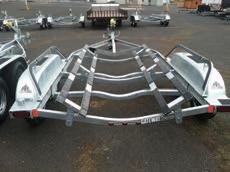
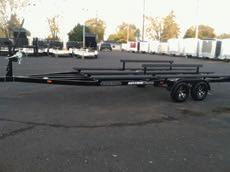

343 Thain Rd., Lewiston, Idaho • www.gateway-materials.com • 208-743-0720

“Watching someone land a couple of large trout on what was beginning to look like a blank day makes you envious and hopeful,” Gierach writes, “and does wonders for your concentration, but none of that lasts forever.” (JOANNA GILKESON/USFWS)
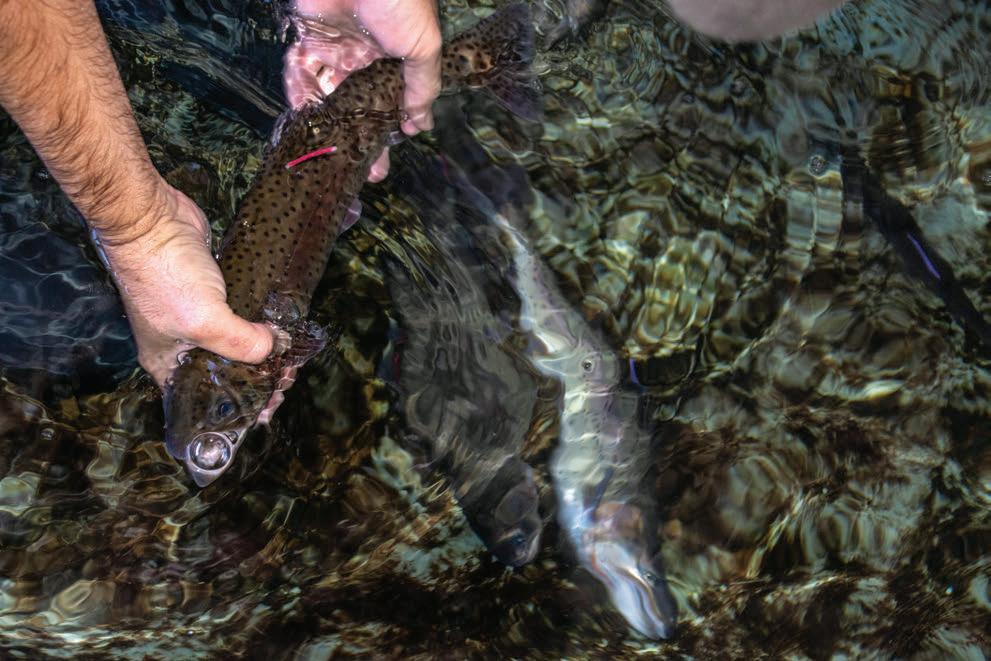
papered with snapshots of big cutthroats, none smaller than about 15 pounds.
These are big trout by anyone’s standards, but there are reliable albeit unofficial reports from the old days of cutthroats weighing as much as 60 pounds. That’s a number I had to stop and think about. We’re talking about cutthroat trout the size of a respectable tarpon or a world-class Atlantic salmon living in a landlocked desert lake in the American West. There was no mention of how those enormous trout were caught, but I can almost guarantee you it wasn’t on a size 12 midge pattern fished on a fly rod.
Trophy fisheries naturally attract headhunters, but the whole size business can also get under the skin of otherwise normal fishermen enough to make the perfect enemy of the good and cause them to be mildly disappointed by what would normally be an impressive cutthroat. I landed at least some fish every day except one and my biggest was a little over 22 inches long, a thick male with a prespawning flush of rosy pink on his broad flanks. He was handsome enough that I took a picture of him to show friends back home, but at the time Rob just said something like, “Let’s see if we can get you a big one.”
I thought, where I come from, that is a big one, but I didn’t say anything. Rob was just fulfilling his mandate as a trophy guide whose clients expect him to produce on demand like a professional athlete, only at a lower pay grade; he wasn’t really trying to spoil it for me.
BUT I’M NOT HERE to tell anyone what their attitude about fishing should be. Way back in high school I was often told that my attitude was unacceptable and once I even blurted out what I was thinking: That they could tell me what to do, but my attitude was my own and none of their business. I still believe that, even after the stern lecture from the principal about the probable bleakness of my future “with an attitude like that.”
And understand, too, that I’d have been delighted to catch a 20-pound cutthroat – or at least hook one and try my best to land it – and pose for one of those hero shots where you shove the fish’s face into a wide-angle lens to make it look even bigger than it actually is. It’s just that I was at peace with how unlikely that was and couldn’t bring myself to turn up my nose at “smaller” cutthroats between 18 and 22 inches when back home a 10-incher will make your day. I did see two good fish landed that week. One was around 10 pounds, the other more like 12; both impressive doubledigit cutthroats, though probably not quite big enough to make the wall at Crosby’s.
By then we’d moved to a less crowded
www.TopperEZLift.com (651) 207-5634 Mendota, MN
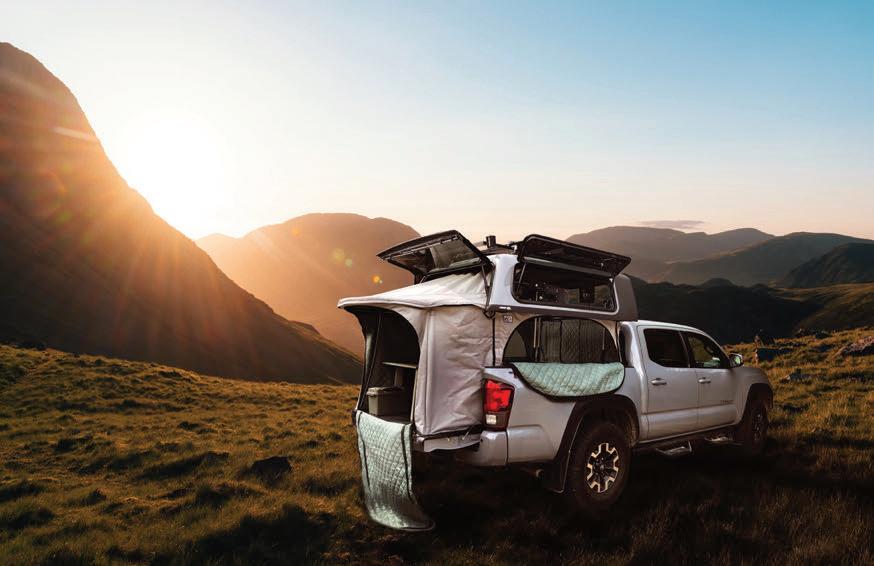

Raise and lower your topper with a push of a button! Topper EZ Lift allows you to get large loads in your pickup without removing your topper and also turns your truck into a pop-up camper!

BEDLINERS | ACCESSORIES PROTECTIVE COATINGS
WHEN PROTECTION MATTERS MOST, LINE-X IT.

California
Line-X of Placerville 161 Fair Lane Placerville, CA 95667 (530) 295-1813 www.linexofplacerville.com
beach where only five or six other fishermen were spread out over 100 yards of shoreline. This was the coldest, windiest day of the week and my slowest day of fishing. Everyone had long since agreed that the fishing was off, but we still hadn’t figured out why and never would. The water was still slightly off color from the flood, but not enough to make a difference. The fish should have liked the heavy cloud cover; the chilly weather wasn’t unusual; and the waves caused by the onshore wind were the kind that stir small organisms off the bottom that attract bait fish that in turn attract big trout. Or so the theory goes.
But the fishing was off anyway and I wasn’t surprised. Floods shake things up – even if it’s not always clear how – and I’ve always had the uncanny ability to show up for the worst week of fishing anyone has seen in five years. Like most savants with an instinctive skill, I have no idea how I do this; it just comes naturally.
I’d been casting a streamer from my ladder, standing for the long punch into the headwind and then sitting to make my erratic retrieve. I was fishing a streamer I’d gotten from a local fisherman; I’d located the drop-off by feeling for the tick as the deeply sunken fly bumped the soft, sandy lip of the shallows, and with extra room around me I could cast to a wider wedge and cover more water. I felt like I had this wired except for the fact that I hadn’t had a touch all morning.
ACROSS THE WATER TO the east the barren mountains of the Lake Range seemed to rise right up out of the lake itself looking like the arid Sierra de la Giganta on the Sea of Cortez except for the dusting of fresh snow on their peaks. A mile or so to the north a long point of land stuck out into the water with a plume of steam from a hot spring rising from between rock formations and leaning west with the prevailing wind.
Rob had told me earlier that all that land was off-limits to anyone except tribal members because it was “sacred land.” I didn’t doubt it for a minute, but I did remember a First Nations man from Canada explaining that the idea of sacredness didn’t always translate well between our two cultures. That’s because many native people think the whole world and everything in it is sacred, while we Anglos reserve the label for a few specific pieces of real estate and see everything else as a potential site for a strip mine. But they’ll use the term to get a point across and in part because, as the man said, “You white guys are suckers for any kind’a spooky Indian sh*t.”
Late in the morning I noticed that a wading fisherman way down the beach to my left was backing out of the water with a bent rod – the first fish I’d seen hooked all day – and a few minutes later a man on a ladder 30 or 40 yards to my right also hooked one. It took him long enough to land it that I reeled in to watch the show and when his guide got it in the net it turned out to be the 10-pounder.
He’d been fishing something suspended under a bobber, so I nipped off my streamer and was still rerigging with a brace of midge pupae and a strike indicator when the same guy hooked and landed the 12-pounder. I thought, OK, this is it; a pod of big fish has moved in to graze along the drop-off and it’s only a matter of time.
Watching someone land a couple of large trout on what was beginning to look like a blank day makes you envious and hopeful and does wonders for your concentration, but none of that lasts forever.
AN HOUR LATER I was still perched on my ladder. The plume of steam from the hot spring was now almost horizontal as the cold wind picked up and I was wondering how close you’d have to get to the hot spring to feel the warmth. Meanwhile the surface of the lake kept changing from gray to opaque turquoise for no apparent reason.
No more fish had been hooked and the guy who’d landed the two big trout had gone back to his car for lunch, which was starting to seem like a pretty good idea. I was cold, bored, hungry, and fishless, but there was still nowhere else I’d have rather been – something anyone who fishes will understand. CS
Editor’s note: For more on the books of author John Gierach, go to simonandschuster.com/ authors/John-Gierach/1497721.
